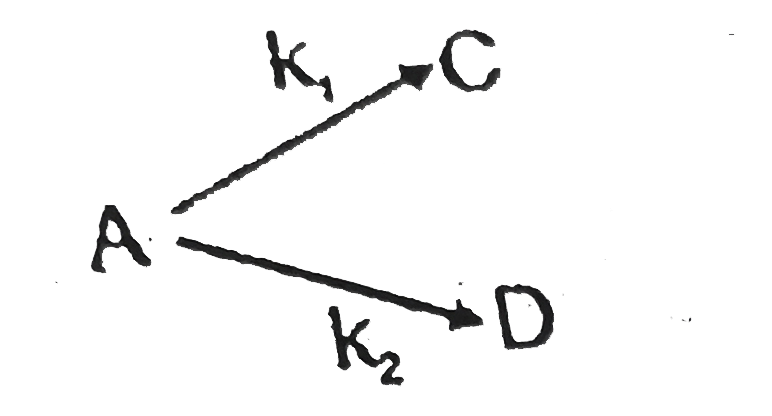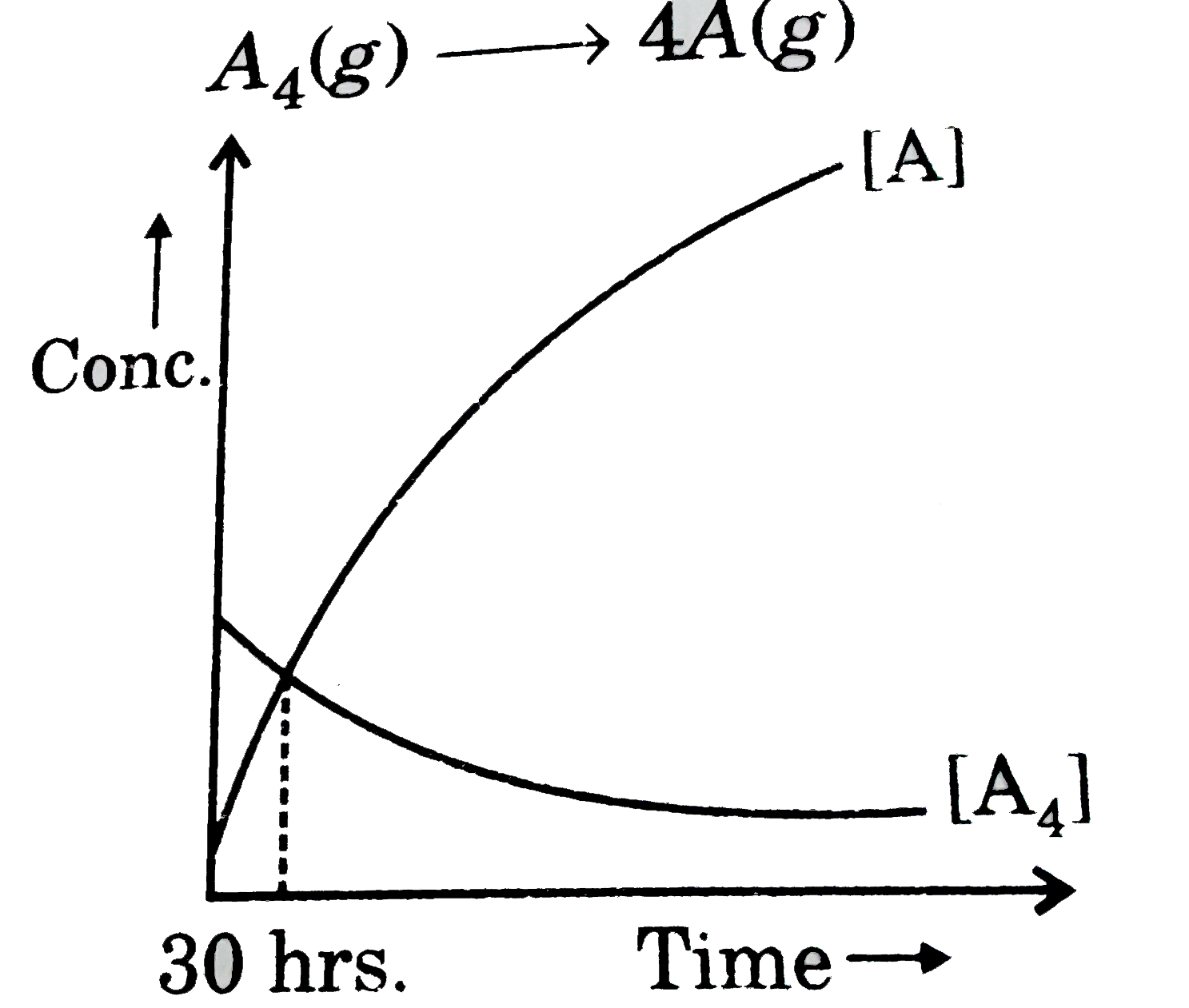Consider the following first order parallel reaction.

The concentration of C after time t is :
2516[1−e−16kt]
−12dAdt=13dBdt+15dCdt=3k[A]+5k[A]=8kA
−dAdt=8kA×2=16kA
A=A0e−16kt
13dBdt=3kA,dBdt=9kA=9kA0e−16kt
B=916[1−e−16kt]
Similarly,
2516[1−e−16kt]
Topper's Solved these Questions
- Chemical KineticsBOOK - MOTIONCHAPTER - Chemical KineticsEXERCISE - Exercise -1 (Introduction, Rate of reaction, Factor affecting rate of reaction, Effect of concentration on reaction rate)
9 Videos
- Chemical KineticsBOOK - MOTIONCHAPTER - Chemical KineticsEXERCISE - Exercise -1 (Zero order reaction, 1st order reaction , 2nd order reaction & nth order reaction)
11 Videos
- Chemical KineticsBOOK - MOTIONCHAPTER - Chemical KineticsEXERCISE - SOLVED EXAMPLE (OBJECTIVE)
10 Videos
- CHEMICAL EQUILIBRIUMBOOK - MOTIONCHAPTER - CHEMICAL EQUILIBRIUMEXERCISE - Exercise - 4
20 Videos
- CLASSROOM PROBLEMS BOOK - MOTIONCHAPTER - CLASSROOM PROBLEMS EXERCISE - Electrochemistry
22 Videos
Similar Questions
Consider the following case of competing 1st order reactions.

After the start of the reaction at t=0 with only A,the [C] is equal to the [D] at all time.The time in which all three concentrations wil be equal is given by :
View SolutionConsider the following parallel first order reactions

The half-life for the decay of A is ........hrs.
View Solution
Knowledge Check
For a first order reaction, the concentration of reactant :
Ais independent of timeBvaries linearly with timeCvaries exponentially with timeDNoneConsider the following first order decomposition and the accompanying concentration-time plot. Which of the following statements regarding the decomposition reaction is/are true?
 AAt 30 hrs, only 20% reaction is completeBHalf-life of the reaction is 90 hrs (approximately)CRate of decomposition decreasing linearly with timeDChanging initial concentration will changethe time at which the two curves are intersecting
AAt 30 hrs, only 20% reaction is completeBHalf-life of the reaction is 90 hrs (approximately)CRate of decomposition decreasing linearly with timeDChanging initial concentration will changethe time at which the two curves are intersectingIn a 1st order reaction, reactant concentration C varies with time t as:
A1/C increases linearly with tBlog C decreases linearly with tCC decreases with 1/tDlog C decreases with 1/t
In a 1st order reaction, reactant concentration C varies with time t as:
View SolutionIn a first ordr reaction, reactant concentration 'C' varies with time 't' as
View SolutionIn a 1st order reaction, reactant concentration C varies with times t as:
View SolutionIn a first order reaction with time the concentration of the reactant decreases
View SolutionConsider the following case of competing 1st order reactions.

After the start of the reaction at t=0 with only A,the [C] is equal to the [D] at all time.The time in which all three concentrations wil be equal is given by :
View Solution
